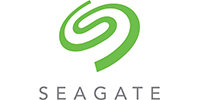Seagate Unveils Mozaic 3+ 30TB Hard Drive Platform
Story Highlights
Seagate Technology has announced a milestone that it says marks a new era in the storage industry.

The company has launched the Mozaic 3+ hard drive platform — which incorporates Seagate’s Heat-Assisted Magnetic Recording (HAMR) technology. The launch heralds unparalleled areal densities of 3TB+ per platter and a roadmap that will achieve 4TB+ and 5TB+ per platter in the coming years.
The Mozaic 3+ platform powers Seagate’s flagship Exos product family, with newly announced, industry-leading capacity points of 30TB and beyond. Exos 30TB+ products will begin shipping in volume this quarter to hyperscale cloud customers.
Seagate’s areal density innovation — which increases the number of bits that can be stored on a platter — addresses common industry pain points. Mozaic 3+ enables customers to store more data in the same floor space than ever before. Upgrading from a 16TB conventional perpendicular magnetic recording (PMR) drive (the average capacity in large-scale data centres) to an Exos 30TB Mozaic 3+ technology drive effectively doubles capacity in the same footprint.
The platform uses roughly the same material components as PMR hard drives while dramatically increasing capacity, allowing data centres to significantly lower storage acquisition and operational costs — including a 40% improvement in per terabyte power consumption. Mozaic 3+ can also help customers achieve sustainability goals — a top priority for large-scale data centres — by offering a 55% reduction in embodied carbon per terabyte (when comparing a 30TB Mozaic 3+ drive with a traditional 16TB PMR drive).
Seagate is experiencing strong demand from data centre customers that are expected to complete qualification of Mozaic 3+ and move into volume ramp by end of this quarter. A leading cloud service provider is focused on ramping Seagate-provided drives to Mozaic 3+, reflecting their confidence in the technology.
“Seagate is the world’s only hard drive manufacturer with the areal density capability to get to 3TB per platter and with 5TB on the horizon,” said Dave Mosley, Seagate CEO. “As AI use cases put a premium on raw data sets, more companies are going to need to store all the data they can. To accommodate the resulting masses of data, areal density matters more than ever.”
“The Mozaic 3+ platform represents more than just HAMR technology,” Mosley noted. “It comprises several industry-first innovations that we’ve integrated to help us scale areal density.”
This includes the use of an iron-platinum superlattice structure, which allows for precise data writing and unprecedented bit stability. It also features a Plasmonic Writer. Since the media are made magnetically ‘harder’ to prevent instability, the design requires a revolutionary writer — a marvel of miniaturisation and precision engineering that is Seagate’s unique implementation of HAMR. Anchoring this technology is a nanophotonic laser, which produces an infinitesimal heat spot on the media surface to reliably write the data.
Seagate plans to vertically integrate the nanophotonic laser into the plasmonic writer sub-system. “Developing this unique laser technology in-house for Mozaic 3+ will ensure even greater efficiency and yield to support rapid scaling of volume production,” Mosley said.
Incorporating quantum technology, Mozaic 3+ includes a Gen 7 Spintronic Reader, one of the world’s smallest and most sensitive magnetic field reading sensors.
“Hard drive areal density improvements are critical for economically and efficiently expanding the installed base of hard drive-based mass storage, especially in data centres,” said John Rydning, research vice president IDC Global DataSphere. “Seagate’s innovative areal density breakthrough is timely and will enable it to deliver increasingly higher capacity hard drive products for many years.”
In addition to data centres, Mozaic 3+ storage technology will enable a wide range of use cases, ranging from enterprise, to edge, NAS, and video and imaging applications markets.
